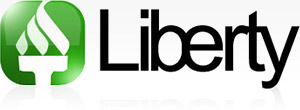The Importance of Cleanroom Certification in Critical Manufacturing Applications
Leave a CommentItems including semiconductors, pharmaceuticals, medical devices, aerospace components, and others are easily damaged or compromised by dust, dirt, and temperature or humidity fluctuations. These highly sensitive products and components are often handled in controlled cleanroom environments to protect them from contaminants and adverse environmental conditions.
Cleanrooms are designed and built to limit the size and amount of particles present in the air and on surfaces. Temperatures, air pressure, and relative humidity are carefully controlled, and personnel often wear special protective garments to avoid transferring dust, dirt, or stray fibers into the workspace. Entry to and exit from these rooms is restricted, and airlock systems may be used to limit contamination.
Some common cleanroom requirements may include, but are not limited to:
- Keeping doors closed at all times
- Cleaning equipment before bringing it inside
- Prohibiting extraneous items, food, and beverages
- Wearing protective clothing including gowns, shoes, and head coverings
- Not exceeding a specified number of personnel in the room at any given time
- Continual HEPA filtration
- Separate chambers for donning and doffing of protective garments
- Specialized walls, flooring, fixtures, and furniture
Not all cleanroom environments are alike, and depending on the application they may have more or less strict requirements for things like walls, temperature and humidity ranges, airflow, protective equipment, and the allowable amount of particulate matter present. How strict the requirements are corresponds to different cleanroom classifications, as outlined in ISO 14644-1. ISO classes 3-8 also overlap with US federal standard 209E classes 1 through 100,000. Here, we’ll look at what ISO cleanroom certification entails, and why it’s important for several industries and applications.
What is Cleanroom Certification?
To be certified to a specific ISO cleanroom class, a cleanroom must be inspected and tested by a third-party organization to verify if all criteria are met. There are 9 ISO cleanroom classes, each corresponding to a specific allowable range of particle quantities and sizes per square meter of space. Classifications range from ISO 1 (i.e., the smallest and lowest allowable number of particles) to ISO 9 (i.e., the largest and greatest allowable number of particles).
For example, in a class 7 cleanroom, there may be no more than 325,000 particles over .5 microns in diameter, no more than 8,320 particles over 1 micron in diameter, and no more than 2,930 particles over 5 microns in diameter. Class 7 does not establish a maximum threshold for smaller particles, though some of the others do.
Each class also specifies airflow and air change rates to ensure proper ventilation is maintained. A class 7 cleanroom must have a minimum of 60 air changes per hour. In addition, gowns, shoe covers, and head coverings are likely to be worn inside the room, and special airlock entryways and pass-throughs are often used.
The Importance of Cleanroom Certification
Cleanroom certification is important for critical applications in the electronics, medical, pharmaceutical, and other industries because it guarantees that products are manufactured without exposure to potentially harmful contaminants. This helps to reduce the risks of spoilage, malfunction, or failure of items like medications, medical devices, electronic equipment, and even vehicles.
Once a cleanroom is certified initially, it must be audited periodically to ensure ongoing compliance. If a cleanroom ceases to meet requirements, a manufacturer’s products and reputation are at risk.
Benefits of Cleanroom Certification
Cleanroom use and certification are often mandatory in certain industries and applications, and optional in others. In addition to meeting industry requirements, cleanrooms offer various other advantages for manufacturing, including:
- Reduced contamination. Maintaining close control over filtration, airflow, temperature, and humidity in certain areas of the manufacturing environment keeps tools, equipment, and components clean and in good working order. This can contribute to overall product quality and reliability.
- Cost reduction and risk management. When the environment in a cleanroom or workspace exceeds the required or preferred conditions, products may require additional processing or cleaning. Maintaining proper cleanroom class conditions reduces the need for extra cleaning as well as contamination risks that can lead to product or component spoilage, damage, or failure.
- Government compliance. Domestic and international government regulations change over time, often becoming more strict in an effort to protect consumers. In particular, strict rules help control food quality, protect the environment, and ensure medications are safe. Certified cleanrooms help manufacturers meet or even exceed product regulations and be prepared for future changes.
Cleanrooms from Liberty Industries
As a manufacturer of products or components that require cleanroom conditions, one of your most important steps is choosing a cleanroom provider with expertise and a range of experience. Liberty Industries has designed and built cleanrooms since 1953, and can provide complete rooms, air and filtration systems, equipment, and accessories to meet ISO certification requirements. Our products are also proudly Made in the USA!
Contact us to learn about our cleanroom services and solutions!


